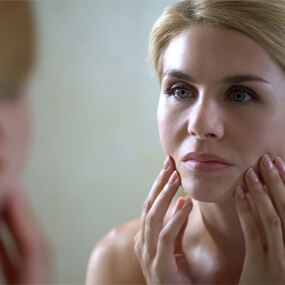Teeth Whitening: 8 Steps to Make It Last Longer

Even if you are consistent with your oral hygiene, the foods you love, and the beverages you drink can stain your teeth. In-office teeth whitening is among the most popular cosmetic dental treatments available because it makes teeth gleam and smiles really stand out. Whether you have an important social event or just want to make great first impressions, teeth whitening can do the trick.
Professional teeth whitening is preferred to over-the-counter products because the effects are more substantial, immediate, and lasting. Better yet, appointments take less than an hour, and both laser- and chemical-based treatments can undo the effects of wine, coffee, and teeth-staining foods.
Once you have had teeth whitening performed, there are steps you can take to lengthen the time between treatments. Let us consider eight tips to avoid tooth discoloration:
1. Avoid or Limit Teeth-Staining Foods
The foods and beverages that caused your teeth to stain in the first place will reduce the long-term effectiveness of any teeth whitening treatments. Whitening can last as long as three years, but that is unlikely to be the case if you consume foods and drinks that have properties that break down your tooth enamel. Some of the most common offenders in the average adult diet include:
- Berries
- Tomato sauce
- Coffee and tea
- Balsamic vinegar
- Red and white wine
- Sugary foods and drinks
2. Use a Straw
Love your morning coffee too much to give it up? Consider drinking it from a straw. Drinking through a straw lets coffee and other beverages pass through your mouth without touching your teeth. Wine etiquette snobs may disapprove, but if it’s all right with Bill Murray, it’s all right with us. You can use straws for drinking just about any liquid that may not be ideal for your teeth, and there are reusable steel straws available that work well with hot beverages and are better for the environment too!
3. Eat Foods That Promote Oral Health
Just as there are foods that damage your teeth, there are foods that protect your teeth and can even whiten them. Crunchy vegetables and fruits are particularly notable because they exercise your mouth, are loaded with water, and promote saliva production. Saliva neutralizes harmful acids that break down tooth enamel and washes away food particles and bacteria. Cheese is another excellent option not only because it encourages saliva production but because it contains calcium and phosphorous that strengthens tooth enamel and even repairs it. Foods that can actually help whiten your teeth include:
- Celery
- Apples
- Cheese
- Broccoli
- Cauliflower
- Strawberries
4. Be Consistent With Oral Hygiene
The American Dental Association recommends that you brush twice a day. Brush once in the morning and again before you go to bed. After other meals and snacks, you can rinse your mouth vigorously with water to dislodge and wash away food particles and any stickiness. If you want to add a mouth freshener to the water, consider lemongrass oil or another natural oil. You only need to floss once every 24 hours because it takes plaque longer than that to form. You can floss extra on occasion to dislodge stuck bits of food, but too much flossing is bad so avoid overdoing it.
5. Visit Your Dentist Regularly
The ADA recommends that you visit your dentist twice a year for a checkup and cleaning. You should never wait longer than 12 months, and patients with gum disease may require quarterly visits. Regular cleanings not only eliminate plaque and tartar but help to extend your teeth whitening treatments. In fact, a cleaning will usually include whitening touch-ups that will really make your teeth gleam again.
6. Discuss Your Options With Your Dentist
Talk to your dentist about your diet and the kind of discoloration you are experiencing. Teeth can become discolored for many different reasons, and your dentist can provide personalized advice on how to avoid it in the future. If you follow the eight recommendations provided here, as well as the personalized advice your dentist gives you, you will ensure that your whitening lasts as long as possible.
7. Perform Touch-Ups at Home
Over-the-counter teeth whitening products are not a viable alternative to professional treatments when it comes to effectiveness. However, whitening toothpastes, strips, gels, and touch-up pens can all be effective complements to in-office whitening and cleanings. Your teeth are unique, so be sure to discuss this with your dentist. He or she can provide personalized recommendations and may even give you an at-home treatment that is the perfect complement to the treatment you receive in the office.
8. Avoid Tobacco Products
It goes without saying that using tobacco is bad for your health in a laundry list of ways—including cancer. If you need another reason to quit or not start, add yellowed teeth to the list. In fact, it takes only several months of smoking, chewing, or dipping tobacco to significantly stain your teeth and undermine any teeth whitening treatments. After several years of tobacco use, your teeth can darken from an unsightly yellow to a disgusting brown. Smoking also promotes the formation of plaque and tartar and puts you at greater risk of gum infections and gum disease.
Enjoy a Whiter Smile
Are your teeth less white than you’d like? Let Jeffrey D. Clark, DDS, and his team at Scottsdale Cosmetic Dentistry Excellence help. We offer teeth whitening with GLO and other options that are cost-effective and provide immediate and lasting results. Call our office at 480 585 1853 to discuss the teeth whitening options we offer and to schedule your appointment.




